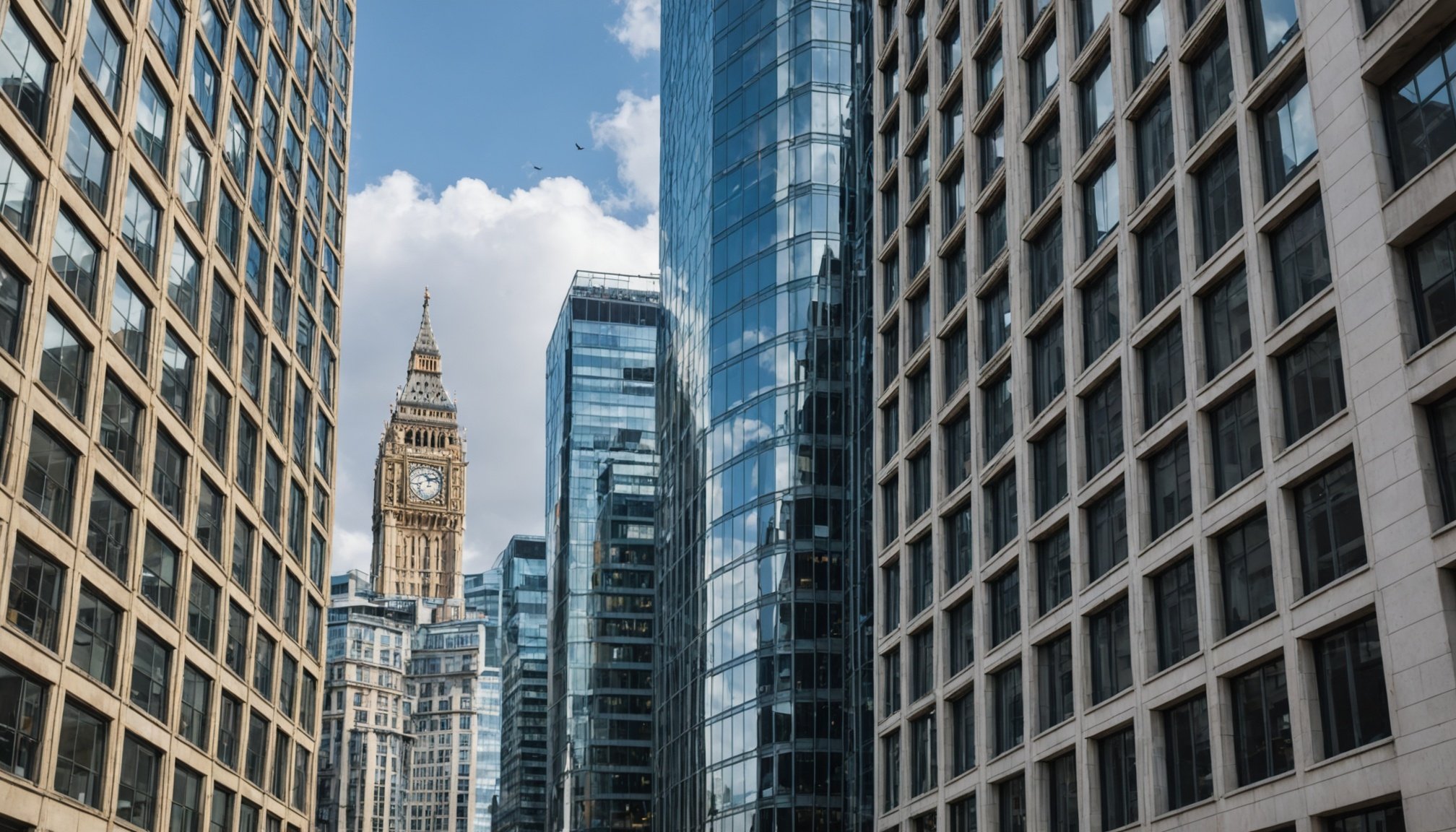Overview of Bird Strikes and Their Impact
Bird strikes are incidents where birds collide with man-made structures, often resulting in ecological and economic consequences. These can occur due to birds’ attraction to skyscrapers, especially during migration periods when reflective glass and artificial lights mislead them.
The ecological impact of bird strikes is significant, contributing to the decline in local bird populations and affecting biodiversity. Urban areas, which often have high-rise buildings, exacerbate these interactions, disrupting natural habitats and bird behaviours.
Have you seen this : How Climate Change Influences Coastal Bird Populations in the UK: Unveiling the Impact
Economically, bird strikes can lead to costly damages to structures and require implementing preventive measures. These incidents highlight the need for architectural and urban design strategies to minimise their occurrence.
In the UK, statistics indicate that skyscrapers contribute substantially to bird strikes, with urban environments like London seeing higher rates due to their dense concentration of tall buildings. Addressing these concerns requires a multi-faceted approach, incorporating technology, community engagement, and regulatory measures to protect both wildlife and urban interests.
Also read : Enhancing urban biodiversity: the transformative role of rooftop gardens in the uk
Efforts are underway to understand and mitigate these issues, promoting changes that can reduce strikes and aid in wildlife conservation.
Effective Design Modifications for Skyscrapers
Modifying skyscraper designs can significantly reduce the occurrence of bird strikes. Key features to mitigate these incidents include using non-reflective glass and incorporating architectural elements like grilles and louvers to break up reflective surfaces. This prevents birds from mistaking reflections for open sky or vegetation.
Certain skyscrapers in the UK have successfully implemented bird-friendly strategies, showcasing how thoughtful architecture can coexist with wildlife conservation. For instance, the Britten Pearl in London’s Canary Wharf is noted for its innovative use of patterned glass and strategic lighting.
Architects can refer to guidelines like those provided by the Royal Institute of British Architects, which emphasize bird strike prevention through design. Employing such strategies not only protects birds but also contributes to sustainable urban development, which is a growing concern globally.
These design modifications are essential because they align with both environmental policy and urban aesthetics, ensuring that development does not come at the cost of biodiversity. Employing these techniques can decrease bird mortality rates and enhance urban areas’ ecological responsibility. Engaging with ecological consultants and avian experts can further guide architects in implementing the most effective strategies for bird protection.
Use of Technology in Bird Strike Prevention
Bird strikes continue to pose a significant challenge, but bird detection technology is increasingly seen as part of the solution. Modern monitoring systems like radar and advanced cameras are at the forefront of efforts to identify and mitigate these occurrences. By detecting bird activity near skyscrapers in real-time, these systems can inform building managers who can then employ protective measures.
Research has demonstrated the effectiveness of several such devices. For instance, radar systems can track bird flocks’ flight paths, allowing timely alerts to be issued. Cameras with motion sensors can differentiate birds from other objects, focusing intervention efforts where they’re most needed. These technologies offer a practical approach to minimise bird strikes, complementing design modifications already in use.
For urban planners, integrating these solutions involves evaluating building locations and layouts, ensuring technology aligns with broader urban planning goals. Incorporating technological recommendations into planning phases is crucial, as is ensuring seamless installation and operation.
Understanding how these technologies work and their effectiveness is key. As we move forward, cities prioritising bird-friendly initiatives may find themselves better equipped to protect their avian residents, achieving a harmonious coexistence between urban environments and wildlife.
Community Engagement and Education
Involving communities is crucial for successful bird conservation endeavours. Local residents play a vital role in implementing bird-friendly practices. Initiatives that involve speaking engagements and workshops can significantly raise public awareness about bird strikes. By learning about preventative measures, community members can actively contribute to reducing these incidents.
Educational programmes in schools also serve as effective platforms for informing younger generations about protecting urban wildlife. These programmes can include activities like bird-watching trips and talks from ecologists, making them both educational and engaging. Teaching children the importance of conservation fosters a lifelong respect and awareness for nature.
Community initiatives such as the “Bird-Friendly Cities” project in the UK have shown success by engaging citizens in discussions and actions to promote safer environments for birds. These local actions create a broader impact, ultimately contributing to wildlife protection efforts.
Engaging non-profit organisations and local government can enhance these efforts, offering resources and support to maximise their reach. By fostering a community-wide commitment to bird conservation, these initiatives encourage collective responsibility and proactive care for our avian neighbours, ultimately reducing the adverse effects of bird strikes.
Policy and Regulation Recommendations
Addressing the issue of bird strikes requires the implementation of comprehensive policy and regulation recommendations. Existing environmental policies within the UK focus on broad wildlife protection, but there is a growing call for more specific regulations that target urban areas and skyscrapers. Current policies do provide a framework but often lack direct measures to mitigate bird strikes effectively.
Regulations can be enhanced by mandating bird-friendly designs during the planning stages of urban developments, ensuring that newly erected structures adhere to best practices. This can involve the use of non-reflective materials and other architecture-based solutions proven to reduce risks.
Government and non-governmental organisations play crucial roles in advocating for these changes. They can spearhead initiatives that push for policy advancements, providing both resources and educational support to municipalities. Additionally, establishing mandatory reporting and monitoring systems for bird strikes within urban environments could facilitate data collection, leading to better-informed regulatory adjustments.
By endorsing stronger protective measures, stakeholders can ensure urban growth aligns with ecological commitments. This involves crafting targeted regulations that not only enforce preventive designs but also encourage ongoing research and technological integration to perpetually refine urban wildlife protection strategies.
Visual Solutions and Landscape Management
Innovative visual deterrents and landscaping strategies play a pivotal role in reducing bird strikes. Incorporating such features into skyscraper designs can enhance their coexistence with wildlife. Projects often utilise window films or artistic installations, specifically designed to make large glass surfaces less confusing for birds. These visual cues break up reflections, effectively preventing birds from mistaking windows for open skies or vegetation.
Intelligent landscaping strategies also contribute significantly to minimising bird strike risks. Surrounding areas with bird-friendly plant species and maintaining natural vegetation buffers create safer zones away from highly reflective structures. Proper management of these landscapes is crucial for protecting local wildlife.
Successful case studies underscore the merit of combining both visual deterrents and landscape management. Buildings that adopt these methods consistently report a decrease in bird-related incidents. For example, some UK skyscrapers have leveraged artwork and natural foliage together, ensuring a harmonious balance between urban aesthetics and ecological safety.
Incorporating these strategies requires collaboration between architects, landscapers, and ecologists. The results are effective techniques that contribute not only to reducing bird mortality rates but also to enhancing the city’s commitment to maintaining sustainable and bird-conscious urban environments.
Future Trends in Urban Development
The evolution of sustainable architecture is pivotal in shaping future urban landscapes. As cities grow, architects are embracing designs that not only meet human needs but also protect wildlife. The idea of sustainable architecture is now a crucial element of urban planning, concentrating on the incorporation of eco-friendly materials and energy-efficient technologies to decrease the ecological footprint of urban structures.
Among these developments, bird-friendly skyscrapers are gaining traction. These innovative designs employ elements that prevent bird strikes, such as non-reflective glass, strategic lighting, and natural ventilation systems. Future designs are expected to integrate even more advanced materials that adapt dynamically to their surroundings, further minimising hazards for wildlife.
Urban planning trends increasingly involve collaboration between ecologists and architects. This collaborative approach ensures the sustainable growth of cities, balancing infrastructural expansion with the imperative to preserve natural habitats. The role of technology in these plans cannot be understated, with smart systems poised to monitor and adapt urban ecosystems in real time.
The overarching goal is to construct cities where sustainable architecture actively contributes to biodiversity, creating urban areas that are more liveable for both humans and wildlife. This foresight-driven planning embodies a commitment to a harmonious existence between burgeoning urban environments and the natural world.











